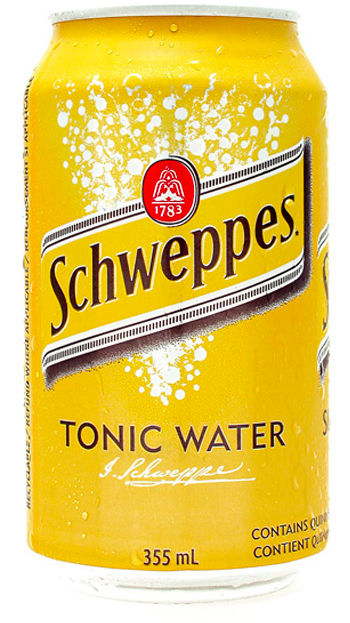The party drink G&T (gin and tonic) has been growing in popularity. However when I asked people if they knew what tonic water really was most people had absolutely no idea. In fact many had never turned the bottle/can over to read the ingredient list. I figured that it was about time we undressed tonic water.
Check out this video of me stripping down tonic water to see if it looks good naked.
Where did tonic water come from? A quick history lesson.
100’s of years ago when people had malaria they would soak cinchona bark in hot water and then they would drink the soaking water. When you soak the cinchona bark it pulls out an active ingredient called quinine. It was the quinine that helped with malaria and it also gave the drink it’s authentic bitter flavor.
As the story goes, it was the British Colonials in India who then started adding gin and lime to this cinchona bark water beverage to help improve the bitter flavor. Over the years they started adding sugar and soda water to the drink to further enhance flavor. In 1850 this sweetened and sparkling quinine beverage was patented in Europe as tonic water and in 1953 it was brought to America by Schweppes Beverage Co.
 Does tonic water look good naked?
Does tonic water look good naked?
Over the years many commercial tonic water companies have adjusted their ingredients to create the tonic water we see today. It’s not what they used to drink 100’s of years ago.
Here are the ingredients of Schweppes tonic water: Carbonated Water, High Fructose Corn Syrup, Citric Acid, Sodium Benzoate (preservative), Qunine, Natural Flavors.
When I undress this product there are a few ingredients that pop out as not looking great naked.
High Fructose Corn Syrup
High Fructose Corn Syrup is typically genetically modified, it’s a heavily processed industrial food product, and it’s made using chemical extraction. It is not a healthy sweetener choice and it is one that I personally try to avoid in my diet.
Quinine (crystalline alkaloid version)
These companies do not use the natural version obtained by soaking cinchona bark in water. They use a crystalline alkaloid version. This is made using a number of different processing steps. Some of these steps may include soaking cinchona bark in quicklime and potassium hydroxide solution, extracting the mixture with acetone, acidifying the mixture with hydrochloric acid, and adjusting the pH with liquid ammonia.
Natural Flavors
According to the Environmental Working Group natural flavor is the 4th most common added ingredient to packaged foods (following salt, water, and sugar). Don’t let the term “natural” trick you into thinking it is healthy. The only difference between natural and artificial flavors is that natural flavors have been derived from plants or animals, whereas artificial flavors are not. However, no matter what the original source was, the chemical makeup of the final flavor could be similar because of the extensive amount of processing that goes into creating these flavors.
Companies often pay more for “natural” flavoring because there is a consumer perception that it is healthier. However, it’s not. In addition, many natural flavors contain many more ingredients than the artificial ones because they are more complicated to create. In some cases natural flavors could contain hundreds of chemicals. When you see the term “flavor” on an ingredient list you really have no idea what you are eating/drinking. Some of these chemicals could be derived from genetically modified ingredients, from allergenic foods, or could include additional preservatives and solvents.
Now what?
When you look at all these ingredients in commercial tonic water you can see that this is not a product that looks great naked.
Now if you are sitting there ready to cry your eyes out because you love your G&T I do have some healthier options for you.
Note that I don’t promote the use of alcohol but if you are going to drink it in moderation, you may as well be mixing it with a healthier alternative.
Option 1: Buy a natural tonic water
A good option is Jack’s Tonique. They use honey as a natural sweetener and they use real cinchona bark extract to give it the authentic quinine flavor. This cinchona bark extract will also give the tonic water it’s authentic amber colour. In addition they add real flavors like lavender, lemon grass, lemon, and ginger.

Option 2: Add a bitters
Another possible option to add flavor to your beverage is to try adding a few drops of bitters to your gin and then topping it off with soda (and lime). Bitters are made from soaking real botanicals in alcohol to extract their flavors. It will help to give you the bitter flavor without adding in all the other harmful ingredients often found in commercial tonic water. Plus, bitters come in many different flavors so you can mix it up and go wild! Check out Dillon’s bitters selection to get started.

If you have ever drank tonic water and found that this article/video taught you something you didn’t know before I would love to hear from you below in the comment section. Plus, please help spread the word about what’s really in tonic water using the social media buttons below. Let’s get the word out there! Thanks for all your support 🙂


